This baseline study helped galvanise Council and Community around the issue and has gone surprisingly well.
It would be good to follow it up later in the year to see if the behaviour changes stick.
Mostly just stuff I am doing to help the planet
This baseline study helped galvanise Council and Community around the issue and has gone surprisingly well.
It would be good to follow it up later in the year to see if the behaviour changes stick.
My advice from an iNaturalist workshop I helped deliver:
You need an email address to sign up to iNaturalist. The platform doesn’t send junk email. It’s a friendly and positive online community that the New York Times called the ‘nicest place on the internet‘.
Observations must be wild, no pets please! But escaped biosecurity threat like turtles and parrots are great. Animal tracks or feathers also interesting. If you are in the garden then just tag your ID as captive/cultivated.
Respect nature – don’t disturb wildlife or habitats for a better photo.
Take photo then upload. If possible take photos from multiple angles. Everyone is always learning about photography, don’t feel self conscious, just do your best.
Add notes about behaviour. Try not to move the subject as the backgound of the photo can help give context.
Size is sometimes really helpful, especially with animal tracks. Hard core people take a ruler, I know a guy who has a ruler tattoo!
If using a phone or GPS enabled camera it will automatically add the location. This is great. If not you can add it manually using a map. Don’t worry if its a protected species like a Gecko that you should not tell people about the location of. iNaturalist will automatically hide the location of those species from poachers.
iNaturalist will automatically ID the animal based on other peoples photos. It sometimes does a bad job but other times it’s amazing, even without leaning on the rest of the community you can learn heaps about the natural world by just using its eyes. If your not sure what something is try and put it in a group, so for example you might not know the species of bird but if you know its some kind of bird just say its a bird.
If other people agree with your ID then it will get made Research Grade which is great. Don’t feel bad if it gets corrected, even the top scientists get stuff wrong, we are all just learning. Also don’t feel bad if no one ID’s it. Some of my observations of weird insects don’t get ID’d for years until a researcher is looking into that space and then they find the data really valuable.
By default your photos are shareable but its better to make them CC BY 4.0 if you want them to be used by researchers and other platforms like Wikipedia. It’s really cool when you look up a species name on Wikipedia and see your photo there. My photos get used by Newspapers and by community groups doing conservation work, I have a Google Alert set up for my name and its nice to see people using my photos for good work and crediting me.
I don’t really use the app very often because I have fancy cameras but the phone cameras are getting really good, especially for taking photos of little things. Most people are using phones. I use the website which is awesome, I follow some adventurous people who go to interesting places and see quite cool stuff, I also follow people in my local community so I know when someone finds something interesting near me.
Over the summer I read Lucy Baragwanath’s copy of Seacoast in the seventies – the future of the New Zealand shoreline by John Morton and friends. It’s a fascinating insight into the pressures on Auckland’s coastline in the early 1970’s. The book mentions an upcoming study on the ecology of the Auckland Harbour. Lucy and I were able to track it down and Paul Kennedy kindly let me borrow his copy.
The Waitemata Harbour Study 1973 by M. F. Larcombe is an incredible record of the intertidal zone but it’s very hard to read because, not only are there a lot of scientific names many of them have changed over time. I used records from iNaturalist.nz to make a visual alphabetic key with updated names to make it easier to read. For some reason not a single scientific study on Google scholar references the study. I hope that changes.
I have been 3D printing different mount designs for my GoPro in order to take photos of the seafloor from my boat / kayak for several months now. I am finally happy with the design and have posted it on Thingiverse if you want to print one yourself.
The mount connects a GoPro to a 1kg dive weight with additional cable ties. You can then lower the drop camera into the water to take photos and videos of the seafloor at different angles. I attach the mount to a diving reel with a stainless steel carabiner snap hook.
Here are some photos taken with the set up.
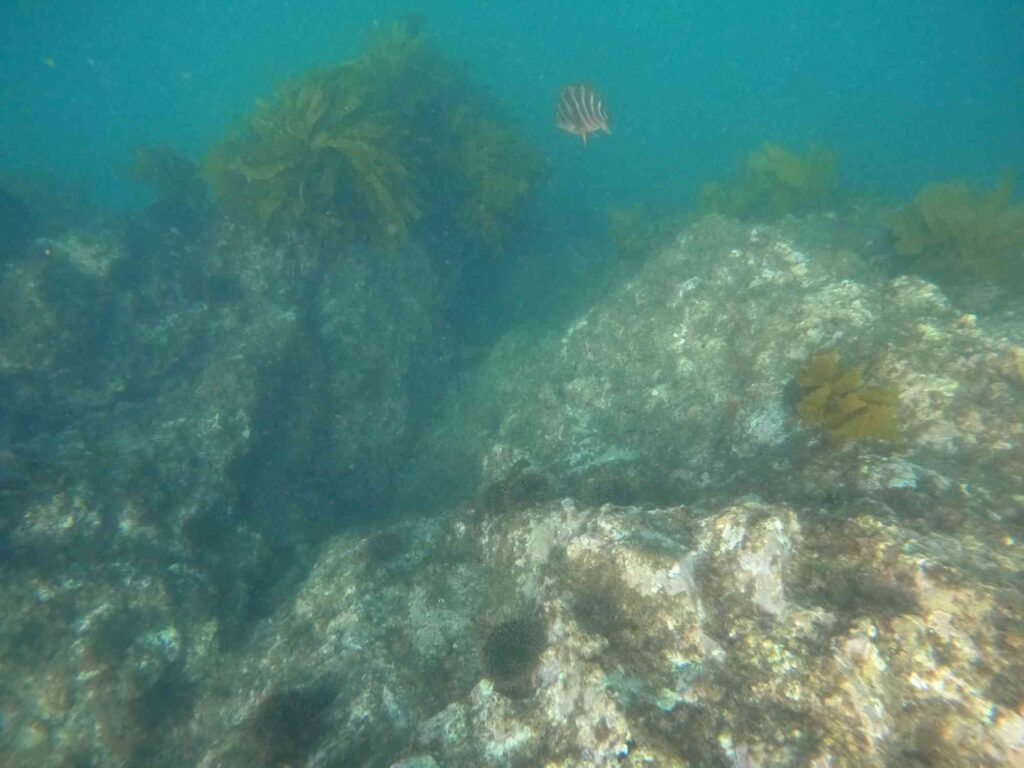
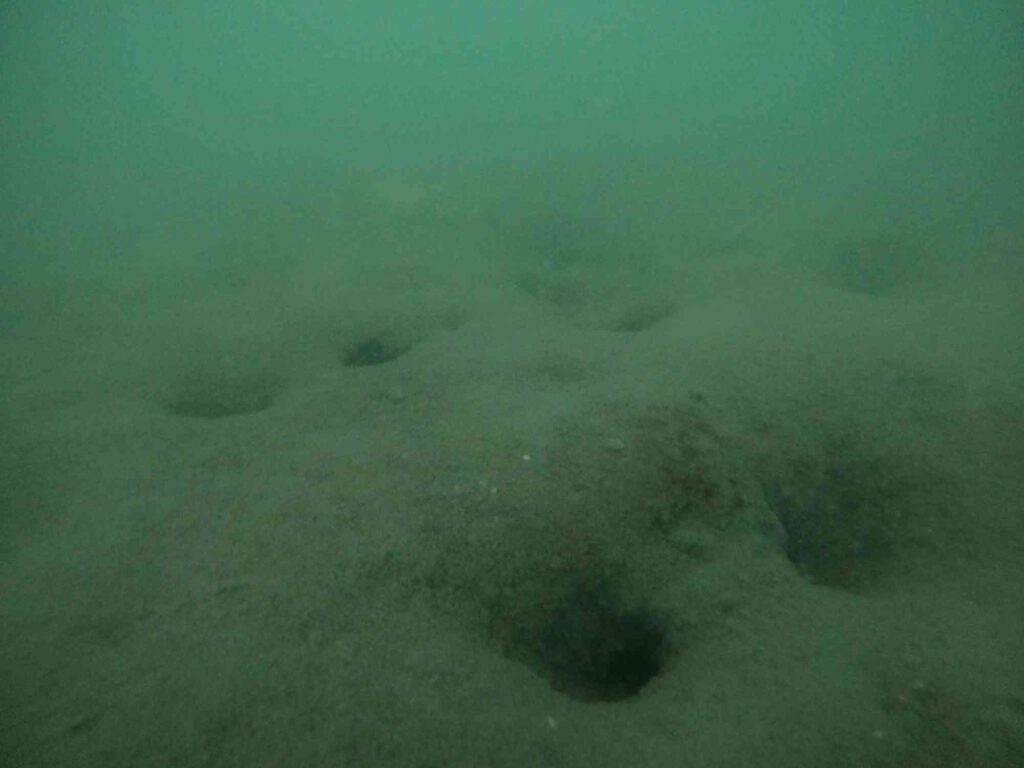


I was inspired by Professor Murray Cox (who had done some simulation work on exotic Caulerpa growth) to make a tool that predicts exotic Caulerpa coverage based on some currently unknown variables. Here is a link to my exotic Caulerpa simulator. Please feel free to email me if you have any new data which would make it more accurate.
I made this sign to help the Tāmaki Estuary Protection Society enforce the set net ban. I am uploading it here so that the map in particular is easily found on the internet.
Set nets are banned in the Tāmaki Estuary. Set nets indiscriminately catch non- target fish species; birds and mammals. There has been a recent increase in illegal set netting in the Tāmaki Estuary, please help protect our fisheries and other wildlife.
If you see a set net within the banned area:
Your kaitiakitanga will be appreciated by generations to come, kia kaha!
From my experiments with underwater tripods I learnt that weight is more important than a wide base for maintaining stability. This is version two of my plastic bottle tripod which I deployed in a gull colony and was pleased with the results. Construction notes:
Of all the jobs that Artificial Intelligence (AI) will replace over the next few decades I never thought mine would be top of the list. I got my degree in illustration 20 years ago, since then I have picked up many more skills but I have always been most proud of my ability to draw. I thought it made me more ‘visually intelligent’ than other creatives because of the volume of data an illustrator has to generate. Over the last few months I have been absolutely blown away by three tools, DALL-E 2, Stable Diffusion and Midjourney. These AI tools are so much faster than me, they have more range, and in most cases are just better at drawing than me. If you want to see what they can do checkout this gallery.
The tools do have some limitations, the main one being the sizes of the images they can draw, but most of these will get solved with market demand. Of course the first thing I wanted to know is how good it was at drawing the things I love, New Zealand animals. My ego was quite pleased to see them fail miserably and in quite entertaining ways (go try kiwi here). Here are some examples of white-faced herons (I have chosen a very well photographed species on purpose).
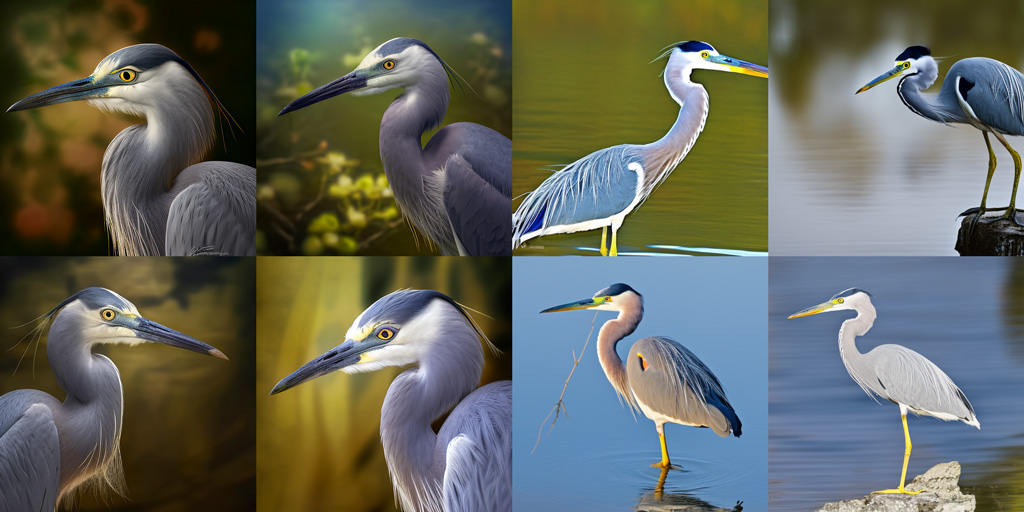
This is mostly because the AI’s have not been trained how to draw these animals. In the above examples MidJourney and Stable Diffusion confuse our native heron (which can also be found in Australia) with a North American Great blue heron. Developers are working on multiple ways for users to be able to train tools to draw specific subjects. One of them (DreamBoth for Stable Diffusion) involves training a model based on 20 or so images. I happen to be a very organised photographer with 2,700 bird photos and 3,300 photos of invertebrates all cataloged by name, place and time. It took me some time to figure out how to do it and it takes a lot of computing power to train the models, here are the 20 photos I used to train my white-faced heron model.
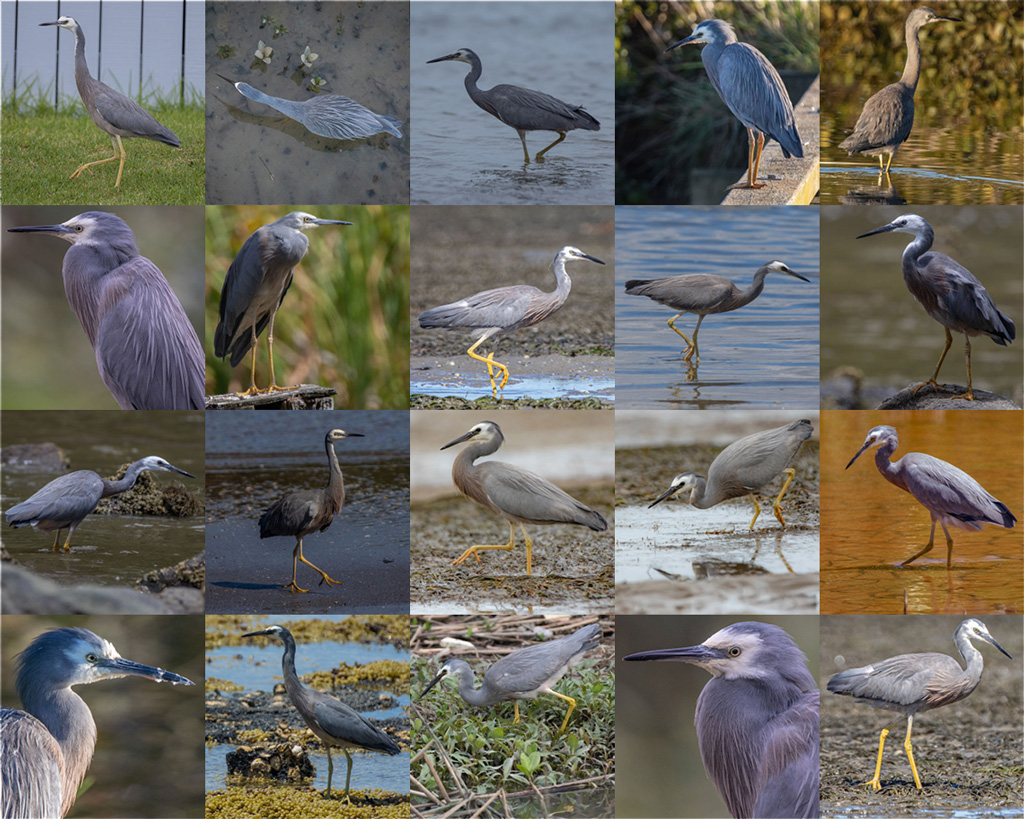
And here are some of the results (good and bad):
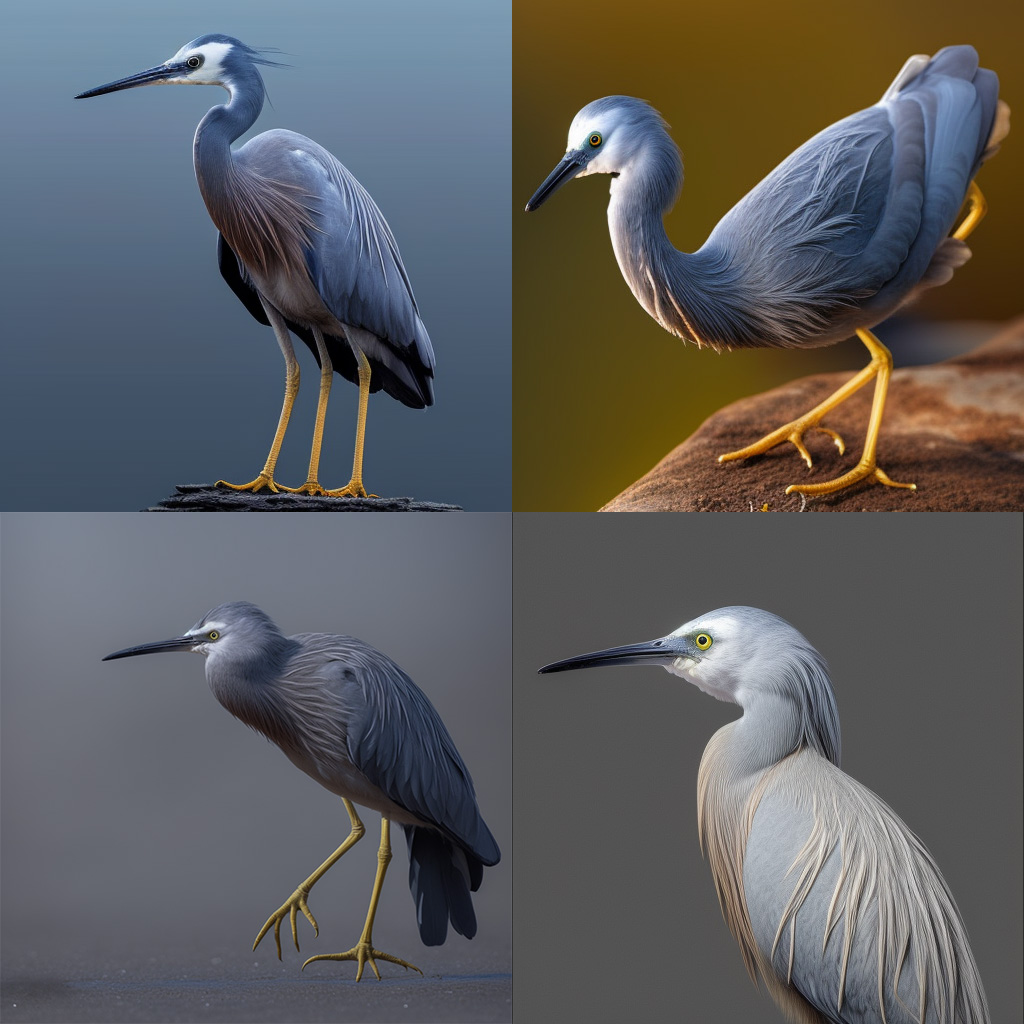
You can see there are still some problems but its pretty good! I can easily fix them up to create future works.
I have been using the tools to create components for illustrations (photo bashing). Here is an example that would have taken me ages to draw from scratch.

I’m excited about the tools and think they will make my work better, faster and cheaper.
The tarāpunga that nest under the Panmure Bridge are heavily impacted by humans, the national population is in decline. While deploying a nesting structure for tara / white-fronted tern yesterday we also added a small extension to the Panmure tarāpunga nesting structure. We upcycled old wood which fitted the rustic nature of the old bridge. The six nesting areas were c35cm x 25cm. The gulls were already a few weeks into nesting with some three eggs nests. As the colony is currently space limited I think the structure will help, but we may have been a bit late deploying. The gulls also nest on boats in the estuary so if some get disturbed they may move to the main colony. It was promising to see two gulls having a tussle over the new nesting area while we exited the estuary.



I checked many old boats moored in the Estuary and did not find any with nests which is great. One pair of gulls nested on a post, another on a jetty where it’s likely to be disturbed. There is a clear case for extending the nesting platform in 2023.


Added some extensions after taking this video (30 September 2004)



24 Reef balls were deployed in two reefs at Long Bay-Okura Marine Reserve in 2001.

They were quickly colonised and dramatically increased the biodiversity in the area.

I have wanted to find these artificial reefs for years and made three attempts. The first dive from the shore was unsuccessful (its too far out and I dont have underwater GPS). The second and third efforts below used line and sonar but still came up empty. I think they have been buried (sunk into the substrate) but I would love to be wrong. The photo above shows a lot more shell on the seafloor than I found 20 years later. I’m not planning any future searches.
12 January 2022
4:15pm High Tide
5-10 knots
.5m-1m swell
Shaun Lee & Jordi Tablada
Boat to from Winstons Cove to Long Bay
12:00pm Look for Reef Balls:
Zig Zag Reef
36° 40’ 52” S, 174° 45’ 14.8” E
36.681111, 174.754111
5.5m at Low tide
Octagon Reef
36° 40’ 51.1” S, 174° 45’ 19.6” E
36.680861, 174.755444
6.2 M at low tide
Dropped anchor 5m from Zig Zag using Garmin GPS
Dived down anchor with line on reel
Vis 5m surface, <1m bottom 5.5m deep, tied line around anchor, spiral search pattern Let line out >30m possibly didn’t turn enough and made more of a sweeping arc
Hoped line would have snagged of epibenthic fauna attached to reef balls but following line back found nothing
Quick check near boat found nothing c30mins total bottom time
Noted layer of mud under sand
A few cushion stars, some heart urchins, Jordi saw a Spengler’s Trumpet
Some dead tutua shells under sand
Large snapper under us when we surfaced
Dropped anchor 5m from Octagon using Garmin GPS
7 minute look in the direction of the reef
Nothing in particular
2:30pm head back as wind pickup up (15knots developing in afternoon).
Resolved to search with a boat that has sonar / fish finder next time.
Thursday 9 September 2022
High Tide 5:30pm
With skipper Ed Chignell
Zig Zag Reef 6.7m
2:45pm
c7 spirals out from waypoint. No clear benthic structure seen on downscan or sidescan.
Octagon Reef 8m
3:10pm
c3 spirals out from waypoint. Drifted south over fishy looking shape 5m south of the waypoint on the downscan. It was still there 5 minutes later so we dropped anchor on it.
I descended the anchor line. Vis 3m, bottom 8.8m. I spiralled out from the anchor for 5 minutes then headed north for an additional 5 minutes. The seafloor was sand/mud with some shell. Nine cushion stars and about six large hermit crabs were seen in 10 minutes. After ascending and heading a bit further south I dropped down for another 5 minutes to check out another fishy shape but didn’t see any reef balls or fish. Many fish were seen in the fish finder.
Note visibility much better than last dive even tho it rained heavily just a few days ago. Hardly any swell or wind over the last two days.
UPDATE: WE FOUND THEM!
https://inaturalist.nz/journal/shaun-lee/74488-dive-report-reef-balls-long-bay
Article about the find here https://gulfjournal.org.nz/2023/02/reef-balls-rediscovered/
Thanks to Andreas Proesl who has been in touch and supplied his internship report which shows how the ReefBalls were constructed and deployed